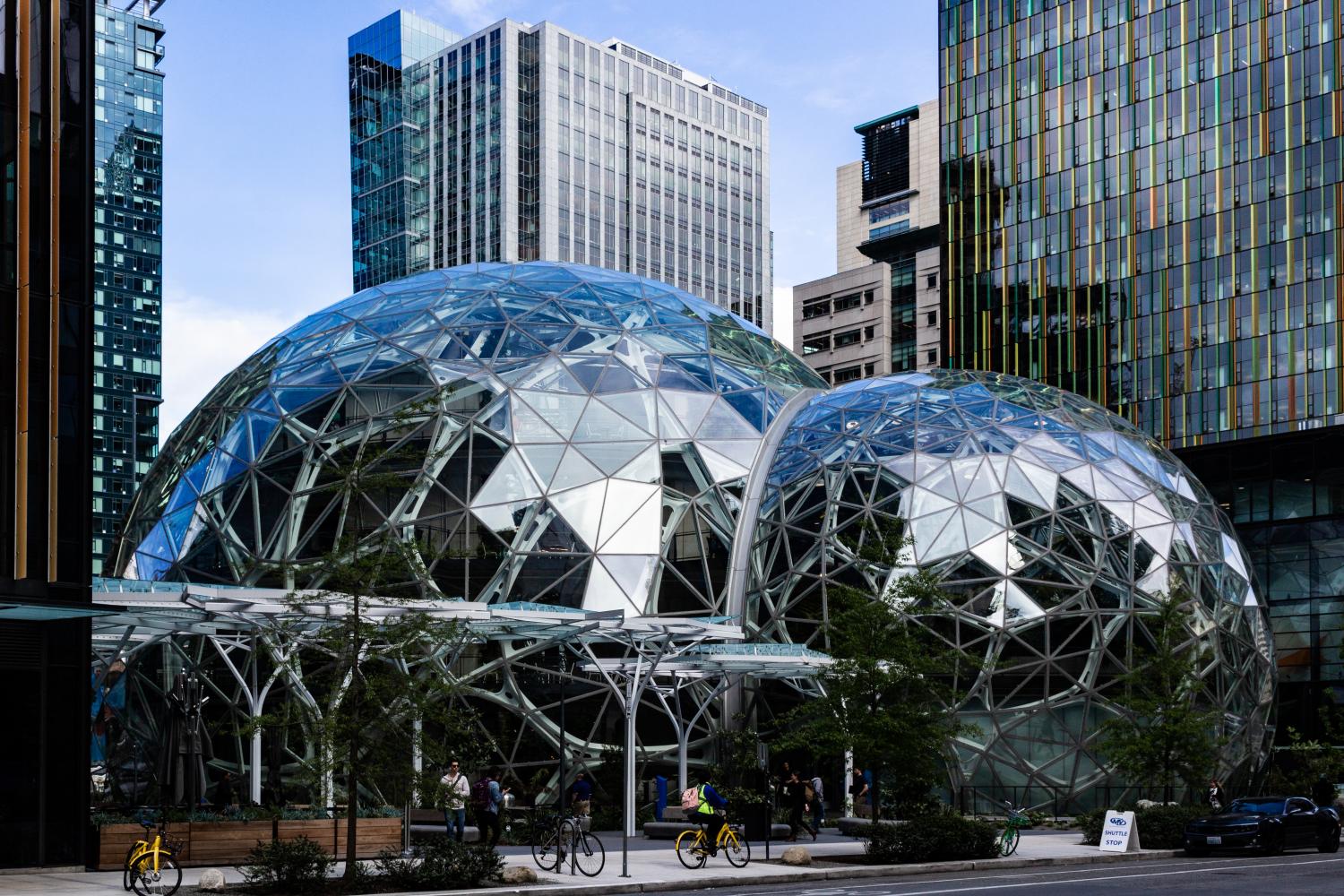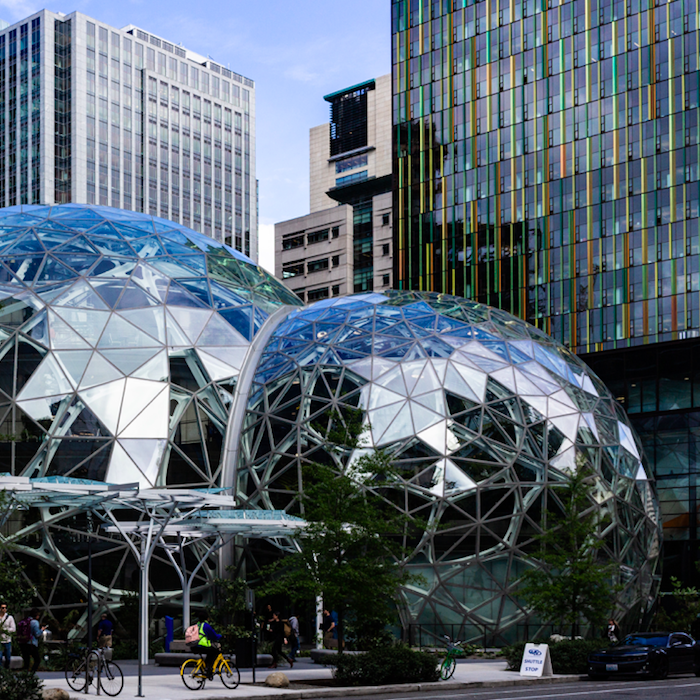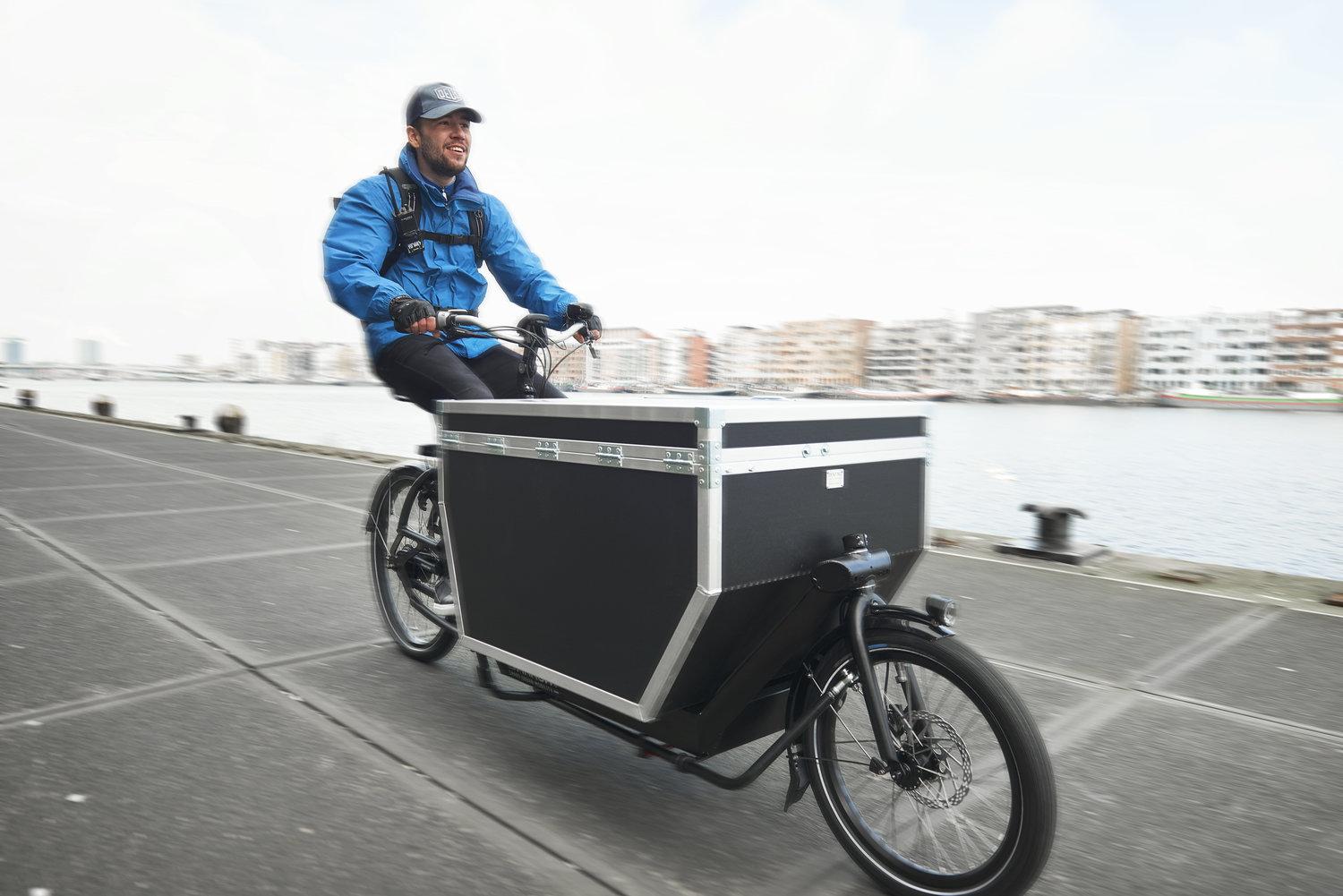This App Could Help Manage Livestock – and Reduce Emissions


Agriculture has increasingly turned to technology in the name of efficiency over the past several years - and now GPS is poised to help out in a new way if this startup can succeed.
The agricultural sector has increasingly turned to technology in the name of efficiency over the past several years. Thanks in part to innovations such as drip irrigation, waste-to-energy projects and even robotics, those responsible for producing our food have often been able to transform how they farm crops, produce dairy products and raise livestock.
GPS is another tool that can be an asset to farmers, who can harness technology to gauge soil conditions, pests, and optimal land and water use. To that end, the startup Vence says its technology can help ranchers both monitor and take better care of their livestock.
Ranchers face several problems day-to-day. Livestock can wander, wander and wander, to the point that they end up on someone else’s property. Obviously, no one wants anyone, including animals, trespassing on his or her land. But livestock can also overgraze, which can lead to erosion and other environmental problems. Then there is the risk that livestock can contaminate lakes and streams. Cattle and sheep can also get sick, but if a rancher is leasing vast swathes of land, he or she may not notice such change in the animals’ health until it is far too late.
Vence’s founders aim to take on these challenges. The company says its collar includes a monitoring device that can detect not only where an animal is located, but also the direction it is facing. If that cow, sheep or bison starts wandering too far, as in toward someone else’s property or a waterway, the collar starts to vibrate. If the animal still wanders too far, it will receive a little shock.
The device works similarly to collars that pets wear at homes with virtual fencing. The one challenge this technology faces is that shock collars on dogs have caused more concern in recent years as many owners, and veterinarians, claim they can cause pets harm; so expect similar argument to arise with this technology if it scales up.
But the flip side to that argument is that this device’s functionality could allow ranchers to obtain timely information on the health of their livestock—therefore, any animal would not have to suffer nearly as long if ranchers had to ability to get notified and secure any immediate required care.
Meanwhile, Vence claims its technology can save ranchers money with lower labor and building costs—as in having to avoid the cost of fencing, which can be a pricier line item in remote rural areas. Better grazing techniques also means more pastureland can function as a carbon sink, which can help ranchers mitigate the global meat industry’s impact on climate change.
Naturally, the reactions of more than a few ranchers would include questions about this technology’s costs.
But that is where the Cargills and JBS USAs of the world can step in.
If the world’s largest meat companies are serious about tackling emissions, then they have got to zoom in on their supply chains. Many companies reply that they have a code of conduct and maintain strict procurement standards by which their suppliers must adhere. But as is the case with many companies’ supply chains, these suppliers often don’t have much of a financial cushion; hence their oft-repeated arguments that such requirements can pile on to their costs.
The bottom line is that companies can talk all they want about a sustainable supply chain, but that's often not possible unless they develop closer relationships with suppliers. And this can only happen if they support and invest in their supply chain—and not wait for a natural disaster or similar cataclysmic event. Programs such as tree-planting and the purchase of carbon offsets are not enough.
In the case of meat companies, technologies such as those rolled out by Vence could help suppliers become more responsible and efficient. Nevertheless, if ranchers are going to adopt these tools, companies have to offer financial support—as in making it far more seamless and cost-effective for apps such as Vence to succeed. The task will not be easy, as many meat companies' supply chains rely on indirect suppliers.
Still, industry support and investment in Vence, along with other peer startups, offers opportunities at many levels. Farmers could score necessary tools at a less burdensome cost, companies could achieve the numbers they need to prove to stakeholders they are responsible, and startup firms like Vence could become more profitable and provide decent jobs. In the end, this means everyone wins.
Image credit: Karsten Würth/Unsplash
Beyond Ground Beef: Del Taco Rolls Out Plant-Based Tacos


Another win for the plant-based protein business: California-based Del Taco announced tacos with Beyond Meat crumbles instead of ground beef will soon be on the menu.
From its origins with the very first taco stand in the Mojave Desert outpost of Yermo, California, Del Taco has since grown to well over 500 locations across 15 states. Like its California-based cousin, In-N-Out Burger, Del Taco enjoys cult status across the Golden State—and mind you, long before Lily Tomlin’s character on the Netflix hit Grace and Frankie made it a regular staple on the show. There’s no middle ground on Del Taco for Californians—you love it or leave it, and if you love it, no one can convince you otherwise.
The “leave it” crowd, however, may get a little smaller with Del Taco’s announcement that protein-packed yet meatless tacos will debut on the menu starting April 25.
This is another pointed shift in the fast-food industry, which overall has struggled in recent years. Among the many reasons, more consumers are willing to spend extra coin at fast-casual chains with a perceived social focus, such as Panera Bread and Chipotle.
But from next week on, vegan and vegetarian customers will have more options than the bean and cheese burrito. And as more Americans choose to curb their intake of red meat, Del Taco could score more visits from customers who still have those relentless late-night cravings but may opt away from fast food due to lack of choices.
The development is also good news for Beyond Meat, which launched several years ago with a winning fake chicken product and partnered with Del Taco on the new offering. It's also another big step forward for the plant-based protein industry overall, which is scoring menu space at chains like Burger King and TGI Friday’s.
Of course, the planet benefits as well. There’s no shortage of data showing that the global meat sector has contributed its sizable share to climate change, not to mention the ongoing concerns over animal welfare within many of these companies’ supply chains. Del Taco’s announcement, paired with Burger King’s vegan burger trial in the St. Louis area, puts more pressure on fast-food companies to offer better, tastier, and ethical meatless options on their menu boards.
“We are excited to partner with Del Taco as they become the first national Mexican QSR [quick service restaurant] to offer a plant-based meat option on-menu,” said Ethan Brown, Beyond Meat’s founder and CEO, in a public statement. “Our plant-based crumbles offer the delicious taste, texture and satisfaction of ground beef, while offering the added health and sustainability benefits of plant-based meat.”
For now, Del Taco will offer two options: a vegetarian taco with cheese and an all-vegan choice with avocado. The company has not confirmed if Lily Tomlin’s character will be the spokeswoman for a future Beyond Burrito, but if such chatter isn’t going on in the company’s Orange County headquarters, it had better start now.
Meanwhile, the company is offering a free Beyond Meat-based taco; of course, that’s if you download the app and follow a few simple directions.
Image credit: Del Taco
Hawaii Is Placing Renewable Bets on Wave Power


Hawaii's waves could soon power more than surfboards, as the Aloha State is home to a wave power project that could help electrify homes and businesses without emissions.
In case you’ve followed various television shows over the years, such as Hawaii Five-O and Magnum P.I. (as well as their recent next-gen series) . . . along with High School Reunion and Dog the Bounty Hunter, you’ve probably noticed the Aloha State enjoys a few waves here and there along its islands’ coasts.
Those waves could soon power more than surfboards.
This year, Hawaii seeks to prove that wave power can help electrify the remote, energy-strapped islands. Residents and businesses across the state have long been frustrated by high electricity costs, and occasional reliance on diesel-powered generators also hurt the state’s air quality. Add the fact these sources of power have to be hauled to Hawaii across long distances, and it is easy to understand the state’s quest to become energy independent.
In 2015, Hawaii's government announced a long-term plan to run entirely on renewables by mid-century. The state has been edging closer to that goal, and by most accounts it's leading all U.S. states in just about every single clean energy category. Nevertheless, plenty of hurdles, frustrations and setbacks remain.
Wave power could provide another step toward achieving Hawaii’s renewable energy goals.
The concept is simple in theory but has proven to be difficult to execute in practice. The air accompanying waves is pushed through turbines, which in turn rapidly spin and can create energy. Attempts have been made since at least 1890, but commercialization has proven to be a pesky task.
Ireland-based Ocean Energy, however, says it has the answer to harnessing this potential source of power. The challenge for the company is to build a platform that can withstand the harsh Pacific Ocean environment while being able to transmit power to Hawaii’s grid. But after three years of testing in the Atlantic, Ocean Energy suggests its turbine system is ready for prime time. The company has partnered with a Portland, Oregon-based engineering firm to build an 826-ton wave energy turbine platform (shown below) that soon will be shipped across the Pacific for testing this fall off the windward coast of Oahu.

Ocean Energy’s $6.5 million project is part of a $12 million program underway at the U.S. Navy’s Wave Energy Test Site. The site tests for wave energy’s environmental impact, wave power devices’ performance and long-term durability.
The U.S. Navy has long had keen interest in harvesting power from the ocean. As TriplePundit cleantech reporter Tina Casey discussed several years ago, projects such as this one in Hawaii open new opportunities for companies that are developing wave power (also called marine power) technologies, because such research and development is led by private sector innovation rather than deploying in-house research.
The U.S. military has long been focused on having reliable and secure sources of power, especially in remote locations; Hawaii’s tourism will always be important to its economy, yet needs to grow sustainably; and new sources of electricity can provide good paying jobs. If Ocean Energy’s technology succeeds, Hawaii scores a win many times over.
Image credits: Ocean Energy; Leon Kaye
Finding ‘Sensitive Intervention Points’ Could Help Find Solutions for Climate Change


Oxford researchers are suggesting a solution that could change the way we have been approaching climate change mitigation and adaptation.
For decades, since the very first World Climate Conference in 1979, we’ve promised to fix climate change, reduce emissions and switch to renewable energy. These promises were renewed every few years with a new panel and a new international agreement.
Not a whole lot has changed since then, other than our understanding of the scope of the problem. Many signatories of the 2015 Paris Agreement are still not on track to meet their emission goals. And last year, the Intergovernmental Panel on Climate Change (IPCC) warned that we have 12 years left to keep global temperature rise below 1.5 degrees Celsius. Greater increases could be enough to tip us over the edge into irreversible and far-reaching effects of climate change, say authorities like IPCC and NASA.
If the current way of taking on this problem isn’t working, it may be time to try another strategy.
A recent commentary published in the journal Science offers a solution that could change the way we approach climate change mitigation and reduction. Instead of trying to topple entrenched industries with small subsidies to their opposition, Oxford Martin School researchers suggest investing those resources into key social and political movements they describe as “sensitive intervention points.”
The idea is simple: Find an existing opportunity, such as a politician fighting to legislate carbon emission limits or someone like Greta Thunberg, the 15-year-old Swedish student who is striking until the government takes action on climate change. Use money, talent and experience to nudge that moment further, to propel it to a stage where it can’t be buried by the next article in your newsfeed and forgotten.
The Oxford researchers illustrate the plan’s potential with a potent historical example: the author of the book Uncle Tom’s Cabin, which helped catalyze public opposition to slavery in 1850s America. “If the school strikers keep gaining momentum, Greta Thunberg could become the Harriet Beecher Stowe of our time,” wrote Dr. Matthew Ives, a senior researcher at the Oxford Martin Program on the Post-Carbon Transition.
“But such dramatic, nonlinear shifts can’t easily be incorporated into traditional economic models, as we saw with the global financial crises, so climate strategies aren’t designed to take advantage of them. A variety of examples from very different fields, however, suggests that modest, highly-targeted policies could have oversize effects to mitigate climate change—what you might describe as economic butterfly wings creating a climate action tornado.”
In other words, all these climate change temperature charts and predictions about mitigation are measuring our current economic trajectory. They can’t take into account the impact of social and political movements since they are composed of primarily qualitative traits rather than quantitative.
Therefore, Ives and his research team recommend we approach climate change not solely from a financial point of view, but also from an emotional one.
That does not mean advocates for climate action should dismiss any economic case for doing anything possible to limit global warming. For example, the researchers describe financial measures mandating companies to disclose climate-related risks as a possible sensitive intervention point.
But of course, such a change could dramatically alter the valuation of companies committing to long-term performance claims. Such a tactic could also conflict with the goals set by the 2015 Paris Agreement—and even lead to an overhaul in the pricing of fossil fuel assets. The researchers further suggest that an upending of current accounting standards could make renewables a more attractive investment, decreasing the possibility of stranded assets.
These sensitive intervention points could appear at any time, in any place and in almost any form. Instead of simply throwing cash at climate change risks, a more subtle and intentional effort should be made to amplify these efforts to galvanize people and governments into action.
On that point, Jules Kortenhorst, the CEO of Rocky Mountain Institute, said: “The important point from this research on sensitive intervention points is that we stick the needle precisely where it can have the most immediate action. We know that time is of the essence and our resources are just barely up to the task. So, we have to be very precise in how we allocate those scarce resources to accelerate the transition to a low-carbon future.”
The Oxford researchers are suggesting a major paradigm shift, but it’s important to note that it’s not a total departure from the previous strategy of slowly transitioning into a carbon-neutral or post-carbon economy. It’s an addendum that depends on an appeal to our collective pathos to drive the necessary change.
It won’t be easy, but it can’t be any harder than limiting climate change to 1.5 degrees Celsius by 2050. I say the private sector, nonprofits and governments work together and give this approach a try.
Image credit: Pixabay
Gene-Edited Foods Just Took a Big Step Toward Commercialization


The path for gene-edited foods to widespread commercialization has begun, and they could be an important key to unlocking questions over long-term food security worldwide.
Agriculture technology ("agtech") companies of all sizes are vying to enter commercial food markets. Last month, when news broke about the first successful food made with a gene-edited crop, some suggested this new technology could leave genetically modified foods (along with their controversies and regulations) “in the dust.” Various stories focused on the startup Calyxt’s first commercial sale of Calyno high oleic soybean oil to the foodservice industry.
Now, the commercialization of gene-edited foods (or as Calyxt dubs it, “concept to fork”) is one step closer to reality.
Why is the race on to advance gene-edited food for commercial purposes? Dr. Oliver Peoples, CEO of Yield10 Bioscience, a player in this evolving field, explained in an interview with TriplePundit:
“Enhancing global food security through improved seed yield and crop resilience is key to ensuring we’re able to produce enough food and feed, using the space and resources that we have available. The global population is expected to grow to 9.7 billion by the year 2050, and this population increase will require substantial additional food resources. In addition to this growth trend, worldwide, consumers are also demanding more dairy and protein in their diets.”
Yield10 says it has been working to improve seed yield in commercial oilseed crops to tap into emerging market opportunities and address unmet needs for global food security. The company recently announced the advancement of the yield-enhancing C3003 gene trait into commercial development for canola (fields of which are shown in the photo above). Since canola oil has a neutral flavor, high smoke point and smooth texture, it is one of the most versatile, and most used, cooking oils.
“Yield10 is focused primarily on increasing canola seed yield for the purpose of edible oil production and for food and feed purposes. The harvested canola oil can be used to produce cooking oil while the meal from this crop can be used for animal feed for cattle, poultry and swine,” Dr. Peoples adds.
While beefing up seed yield may sound ominous, some biotechnology and agtech companies are making transparency a priority. As reported previously on TriplePundit, C3003—a gene found in algae—has produced encouraging seed yield improvements in oilseed crops. How does a gene found in algae work to improve canola oil production?
The C3003 yield trait was discovered through one of the company’s academic partnerships funded by ARPA-e, a division of the Department of Energy, Dr. Peoples told us. It appears to be a unique genetic trait that impacts photorespiration, a biochemical pathway in C3 plants, which is responsible for significant losses in yield.
As C3003 is based on a gene from algae, Yield10 is testing the trait in a number of major crops including canola, soybean and corn. The company conducted field tests with canola last year, which produced encouraging results as the trait produced seed yield increases of up to 11 percent in the most resilient strains of canola tested.
Yield10 will progress C3003 in canola into the commercial development phase in 2019. As such, more field tests of C3003 in canola are planned this year, Dr. Peoples said.
“At Yield10, we believe that new genome editing techniques, such as CRISPR, which enable precise changes to the plant genome, have the potential to transform the agriculture industry,” Dr. Peoples told us. “Precision engineering in crops such as canola, Camelina, soybean, corn and others may also enable the creation of healthier nutritional profiles from our crops, such as oils with healthier fat profiles and higher fiber wheat.”
In addition, Yield10’s technology could enable higher yielding crops by optimizing photosynthesis and carbon efficiency as well as develop additional crops that could become more drought resistant. Both farmers and consumers would benefit from these new agricultural technologies, Dr. Peoples claimed.
Despite the broadsides lobbed at this industry, such as “Frankenfood,” technology could well be effective at safely increasing crop yield on a planet that is under increased strain due to rapid population growth, the continued loss of farmland and, of course, climate change.
Image credit: Steve Buissinne/Pixabay
Danone North America's CEO Wants to Lead a B Corp Movement


Danone North America CEO Mariano Lozano says he is ready to see the $6 billion company dethroned as the largest B Corp in the world.
A year after Danone North America became the world’s largest certified B Corp, CEO Mariano Lozano says he is ready to see the company dethroned. In a wide-ranging interview with TriplePundit, Lozano invited other large organizations to bump Danone out of the top spot and help drive a global movement in transforming the way companies do business.
“We are today the largest certified B Corp, but hopefully only for a short time,” Lozano told 3p. “We’d like to see a bigger player come along who could leapfrog us and get certified. That would be the proof we are boldly leading the movement and moving the needle.”
Lozano’s leadership during this time was among the reasons he was named winner of Responsible CEO of the Year: Public Benefit Corporation at last year’s 3BL Forum.
Certified B Corporations are required to consider the impacts resulting from their decisions on their workers, customers, suppliers, communities and the environment. The first B Corps were certified in 2007. Today, there are over 2,700 certified B Corps in 64 countries, including leading brands Ben & Jerry’s, Patagonia, Seventh Generation and Eileen Fisher. The voluntary B Corp certification is administered by the nonprofit B Lab. Certifications are also based in part on a company's verified performance on the B Impact Assessment.
“An Immense source of pride”
Danone North America had expected the certification process to take three years, but the company was able to achieve this within one year. “[It’s] because of the huge movement of people inside the company who worked to make it happen, who understood that we have the power as a business to serve the greater good. It was an immense source of pride for the entire team,” Lozano said.
Danone North America’s parent company has nine goals aligned with the U.N. Sustainable Development Goals, which helped guide the company as it worked on its B Corp certification. Currently, more than 30 percent of Danone's entire global business, with revenues of about $30 billion, is B Corp Certified, with Danone North America representing 20 percent of the business, or about $6 billion.
The accelerated path to becoming the world’s largest B Corp was driven by Danone North America’s 2017 acquisition of WhiteWave, a $4 billion global leader in organic foods and plant-based milks. Lozano said both companies shared the commitment to becoming a B Corp, and once they were legally a single entity, “We could move quickly.”
Shareholders increasingly support B Corp certification
Lozano says that he did not encounter resistance to the B Corp certification from employees, the Board of Directors or shareholders. “I think it was clear it was top-down driven. Of course, we had many discussions around priorities and what needed to be done first. There is always tension between short-term results and the long-term view of a purpose-driven company.”
Shareholders were pleased that the B Corp certification made Danone a more attractive borrower, he added. As part of a 2 billion euro syndicated loan with 12 banks, the lenders agreed to reduce loan margins by as much as 20 percent if the company met its B Corp milestones and other sustainability goals.
A purpose-driven journey
The idea of being a purpose-driven business is a concept that the Argentinian-born Lozano, who has been with Danone for 20 years, says he has long embraced. He has Nelson Mandela’s prison number tattooed on his arm, a reminder from the four years he worked for Danone in South Africa, where he had the opportunity to meet Mandela on the occasion of his 90th birthday.
“You can be inspired by Mandela on how despite decades of apartheid you can put aside your differences to build something together,” Lozano says. “When he passed away, this world became emptier.”
Under Lozano’s leadership, the company has prioritized a number of social areas that factored into the earning of its B Corp status. Among them was strengthening policies to support its 6,000 U.S. employees, including 26 weeks of paid parental leave for primary caregivers and what the company describes as a flexible personal time off policy.
In addition, the company also ensures “complete inclusivity for people who identify as transgender.” That commitment helped Danone North America earn a 100 percent score on the Human Rights Campaign’s Corporate Equality Index as among the best places to work for LGBTQ equality.
When it comes to the environment, as part of its commitment to be carbon neutral by 2050, Danone also offsets 100 percent of the electricity and water footprint of its manufacturing across the U.S.
Inspiring the supply chain
Danone North America is also rolling out a compliance program to 100 percent of its suppliers with the goal to help the company track where they are located in order to support commitments to work with local suppliers where possible.
“On the supplier side, what is so powerful about being a B Corp is the ability to inspire our thousands of suppliers and partners whom we purchase ingredients from and the retailers we sell our products to,” Deanna Bratter, senior director of public benefit and sustainable development at Danone, told 3p. “We are not just bringing B Corp to life for us, but also championing it across our supply chain.”
Among those suppliers are what Lozano described as Danone’s “farmer partners,” who are helping fulfill the company’s ambition to create more sustainable agricultural practices. That includes a big emphasis on regenerative agriculture—a model of agriculture that, according to Danone, protects soil, empowers farmers and promotes animal welfare.
“We want to be known as a ‘good’ big food company,” Lozano said. “We are delivering more choices to the consumer [and] to the farmer.”
Given the challenge of feeding a global population that is set to surpass 9 billion people by 2050, Lozano said, “We need to explore other agricultural systems that can be equally or more effective than our conventional systems.”
In the past few years, Danone has responded to consumer demands for non-GMO produced foods, including the conversion of about 65,000 acres to non-GMO cropland to provide feed for the cows that make milk for its Non-GMO Project Verified products.
“We offer all options—conventional, non-GMO, grass-fed—because we believe the consumer is moving in that direction,” Lozano said.
Image credit: Aline Ponce/Pixabay
Message Received? Amazon Employees Bring Climate Change Activism Inside


Thousands of Amazon employees recently circulated an unprecedented open letter to CEO Jeff Bezos, demanding that the company do more to take on climate change.
Last week, a group of Amazon employees circulated an unprecedented open letter to CEO Jeff Bezos, demanding that the company do a better job of addressing climate change. Within a matter of days, the letter attracted 6,000 signatures and the numbers continue to climb.
If the letter touches a raw nerve at Amazon, it should. In the context of global competition for top talent, foot-dragging on climate change is all but certain to turn off the next generation of innovators and creative thinkers.
The Amazon letter and climate change
The Amazon open letter reflects how today's employees are assimilating the fundamental principles of corporate social responsibility and calling on their employers to abide by them.
That connection is especially strong when employees are stockholders. The letter published in support of a shareholder resolution on climate change is included on page 29 of Amazon’s most recent proxy statement, which was released last Thursday.
The letter also reflects a growing sense that a randomized approach to renewable energy goals is ineffective and insufficient. For example, the letter draws attention to the possibility that Amazon’s carbon emissions could actually increase by 2030 as the company grows.
Specifically, it describes Amazon’s “Shipment Zero” plan as a license to pollute, because it enabled Amazon to use carbon offsets for the recent purchase of 20,000 diesel-powered vans.
The letter points out serious deficiencies in those offsets, from a broad corporate social responsibility perspective:
“Offsets can entail forest management policies that displace Indigenous communities, and they do nothing to reduce our diesel pollution which disproportionately harms communities of color.”
Two other areas of major concern include Amazon Web Services’ role in accelerating oil and gas extraction, and Amazon’s political donations during the 2018 election cycle—which went to dozens of members of the U.S. Congress who voted against climate action “100 percent of the time.”
Gender diversity and climate change
The Amazon climate change letter also reflects the nexus of gender diversity and climate advocacy.
Although some of the research is not definitive, surveys show that women are more likely to be concerned about climate change than men. Gender diversity—or rather, lack thereof—may also be at work as fossil energy companies face significant recruiting challenges among the millennial workforce.
That concern is beginning to surface in Congress, on both sides of the aisle. U.S. Sen. Lisa Murkowski (R-AK) recently convened the Senate’s first hearing on climate change in six years, and Rep. Alexandria Ocasio-Cortez (D-NY14) is the leading force behind the Green New Deal.
In that context, it is no surprise that a female Amazon employee, Rebecca Sheppard, was part of the collaborative effort that launched the letter. Gizmodo interviewed Ms. Sheppard at length last week and quickly teased out two key factors that motivated her to act.
One was a keen awareness of the power of corporations to propel transformative changes. “I believe that if anyone can figure out a way to take a stagnant industry like aviation and make it sustainable, it’s Amazon,” she explained. “So I feel really motivated, but I don’t think we’ll be able to do this without a companywide plan to match the scale and urgency of the climate crisis.”
The other factor reflects the relationship between shareholder activism and the bottom line. As an Amazon stockholder, Sheppard is directly invested in the company’s success.
Hearts, minds and climate change
As strongly worded as the open letter is, in some respects it pales beside the actual proposal included in the proxy statement.
The letter paints a positive picture of Amazon’s ability to transform from climate laggard to leader, envisioning a future in which the company can “spark the world’s imagination and redefine what is possible and necessary to address the climate crisis.”
The proposal, in contrast, makes it clear that Amazon is at risk of failing to recruit top talent in the coming years. It states that “Amazon is not a mere victim of climate change—its operations contribute significantly to the problem.”
The proposal also notes that Amazon has a lot of catching up to do, in terms of innovating on climate change: “Multiple industries will have to modernize to meet this mandate. Coal still powers Amazon data centers. Diesel, gasoline, and jet fuel still power package delivery.”
Hammering home the point, the proposal warns that “many of Amazon’s peers, including Google, UPS, Walmart and Target, have reported on climate change plans.”
Amazon’s Board of Directors has advised shareholders to vote against the proposal, and it will most likely fail.
Nevertheless, that doesn’t change the big picture. With the urgency of climate action in plain sight, today’s young job-seekers are faced with a unique opportunity to build climate action into their career choices. The Amazon letter is just the opening salvo in the new climate battlefront.
Image credit: Biodin/Wiki Commons
How LevelTen’s Price Transparency Declutters the Renewable Energy Debate


The lack of price transparency has often impeded the deployment of renewables, but this company has come up with a solution that can help clean energy technologies scale up across the U.S.
As we have long covered on TriplePundit, renewable energy now competes on cost with fossil fuels across the U.S. That price parity helps to ease the political sensitivities surrounding the nation’s energy transition. However, businesses can still face a price transparency obstacle when they try to make the bottom-line case for including renewables in their balance sheets.
The startup LevelTen is one company that has spotted an opportunity in the price transparency problem. Let’s take a look at its solution.
The problem with power purchase agreements
One key obstacle to price transparency has to do with power purchase agreements (PPAs).
PPAs have played a significant role in driving the U.S. energy transition. These agreements provide a low-risk tool for financing wind and solar projects.
The problem is that the U.S. renewable energy market is incredibly complex. PPA contracts are generally not available for public view, and buyers need to expend resources on research and negotiation.
On top of that, the nation’s electricity grid is chopped up into different sections, each with its own market managed by a different service operator. Large companies have the resources to do the research and negotiate deals, but this current reality leaves smaller companies in the lurch. In other words, a large sector of the U.S. economy has not yet engaged with the PPA market. But that’s where the opportunities lie.
The LevelTen solution
Quite simply, LevelTen assembles data on PPAs and shares it publicly. The object is to help both renewable developers and clients understand the renewable energy marketplace in their own area.
LevelTen compiles a quarterly PPA Price Index that provides a snapshot of price trends. Currently the company has 1,200 projects in its database. The company also provides real-time information in key areas like project value, risk and cash flow, and it provides guidance on tax policy and other areas that have an impact the PPA market.
Driving the cost of renewable energy down
In an email exchange with 3p, LevelTen CEO and co-founder Bryce Smith explained how price transparency in the PPA market can help accelerate the demand for renewable energy.
“Renewable procurement becomes easier as wind and solar become more economic,” he explained. “And, the mass adoption of renewables allows manufacturers to lower the per unit cost of renewables. It’s a highly complementary cycle.”
Smith also noted a shift in political attitudes about energy policy: “What this means, politically, is that it's easier and less risky for elected officials to promote renewable standards, now, than it was just a year or two ago,” he added. “It’s far easier for people to envision an economically-vibrant fossil-fuel free world.”
Somewhat ironically, the company’s Q4 2018 report showed a slight overall increase in PPA prices.
However, Smith noted that prices actually dropped in some areas of the country, and he does not foresee any strength in the uptick. “We don’t expect this marginal increase to have an immediate or dramatic effect on the industry,” he said. “As corporations and their stakeholders demand renewable energy, we certainly expect to see more well-executed PPA contracts.”
The rise of aggregation
LevelTen is also beginning to focus on aggregation as a way to accelerate the renewable energy PPA market.
In some states, community choice aggregation programs enable local policymakers to negotiate for more wind and solar—and lower rates—with their utility company. That leverage can benefit companies of all sizes across the board.
Unfortunately, community choice is only available in a handful of states. In addition, the broad-based approach may not be optimal for companies with more aggressive renewable energy goals.
Earlier this year LevelTen introduced a Dynamic Matching Engine service to help fill those gaps for businesses seeking more wind and solar. The new service passed its first big test in February, when a five-member aggregation deployed Dynamic Matching to kickstart a new 100-megawatt solar farm in North Carolina.
The five companies—Bloomberg, Cox Enterprises, Gap Inc., Salesforce and Workday—together claimed a full 42.5 megawatts of the project’s capacity. With these “anchor tenants” in hand, the developer had enough incentive to move forward with the project.
LevelTen foresees a new wave of renewable energy development if smaller and mid-sized companies adopt this dynamic matching model.
Renewable energy reaches across the aisle
As for the political debate, that is rapidly becoming a moot point. Last month, 3p noted that the bottom-line benefits of wind and solar are already motivating businesses to advocate for more renewables-friendly policies at the state government level. Hence improved price transparency can help to provide additional support for the business case of investing in renewables.
The bottom-line crisis associated with climate change impacts is also beginning to receive attention among Republican representatives in the U.S. Congress. In addition, businesses are finding areas of commonality between their corporate social responsibility goals and broader social policies, most notably the United Nations Sustainable Development Goals.
A national Green New Deal is probably a long way off—after all, that policy is still in the form of a proposal—but with companies like LevelTen smoothing the path, demand for renewable energy has nowhere to go but up.
Image credit: LevelTen
7 Insider Predictions About the Future of Food


The global food system is nearing an inflection point. By 2050, countries around the world must find a way to produce more food than they have in the past 8,000 years to accommodate a global population that is set to rise by 2 billion people by mid-century. “Climate change is becoming a source of significant additional risks for agriculture and food systems,” according to the World Bank, and increasing water stress around the world means we'll soon have to do more with less.
All the while, today's consumers are demanding more information about how their food impacts people and the planet—leaving food companies in a race to deliver greater transparency.
Last week, food industry experts convened at Harvard University for the Small Change, Big Impact Food Summit to discuss these issues and more. Co-hosted by Hormel Foods and Harvard University Dining Services, the event touched on challenges stemming from land degradation, water stress and climate change, as well as consumer trends like plant-based eating that are shaping the future of food. Here are just a few of their predictions.
1. Pressure for transparency will only increase
The way people buy their food—and who they buy it from—is changing rapidly. More than 60 percent of Americans cite healthfulness as a primary driver of their food purchases, surpassing even convenience, according to a 2018 survey conducted by the International Food Information Council Foundation. Another 59 percent said they feel it’s important for the food they buy to be produced sustainably.
The rising demand for greater transparency around health and environmental metrics shows no signs of slowing down—and large companies must respond by taking greater steps to share more information with customers, predicts Jim Snee, chairman and CEO of Hormel Foods.
"Over time, consumers and customers will continue to expect more transparency, meaning our processes—from the farm to the factory—will have to evolve and continue to be re-engineered," Snee said. "Our consumers will continue to have increasingly high expectations for their food, and as a global branded food company, we have an obligation to try and move that needle."
2. Soil degradation necessitates innovation on the farm
More than 95 percent of the food we eat depends on a mere 6 inches of topsoil—and this thin, life-giving layer of dirt is diminishing quickly: Research suggests we've already depleted around 70 percent of the world's topsoils. In 2015, the U.N. Food and Agriculture Organization (FAO) calculated that we'll only have about 60 years of harvests left if soil degradation continues. "In some parts of the world, we’re down to about 20 harvests," said Todd Boyman, impact investor and CEO of plant-based meat purveyor Hungry Planet.
Considering it takes around 1,000 years for nature to replenish 3 centimeters of topsoil, these findings are distressing—to say the least—but they may serve as an impetus for accelerated innovation on farm fields around the world, Boyman predicted. "We’re not going to replace the 70 percent that we’ve lost, so we’ve got to figure out how best to use that soil in the most effective way within our supply chains."
3. Loss of farmland presents new challenges for stewardship
Today, 55 percent of the world’s population lives in urban areas. By 2050, that proportion is expected to reach 68 percent, according to the U.N. As more people move to cities and suburbs, former agricultural land is being developed at a startling pace.
"If you look at the United States, between 1992 and 2012, we’ve lost 31 million acres of usable farmland [to development]," said John Ghingo, president of natural and organic meat brand Applegate, which Hormel Foods acquired in 2015. "That puts pressure on the system, because if you think about those 2 billion people coming, they need somewhere to live, too."
Given the need to produce more food with fewer resources, Ghingo cautioned producers to be mindful of farmland loss in the coming years, as it could present additional risks for poor stewardship and soil degradation. "That’s the kind of thing that can lead to bad practices in terms of how you treat the land, because then it becomes all about output," he warned.
4. Plant-based eating is on a roll
The food sector is still buzzing over news that fast-food giant Burger King will test out a vegan burger from analog meat company Impossible Foods at 59 restaurants in and around St. Louis. The plant-based Impossible Burger is also set to hit grocery store shelves for the first time this year, along with a host of new vegan offerings from upstart and legacy food companies alike.
More than 30 percent of Americans plan to incorporate plant-based foods into their diet this year, and this trend will only accelerate, experts predict. "In virtually every venue, people are ready for these types of foods," said Boyman of Hungry Planet.
5. Policy change is needed to keep family farming alive
The world's farmer population is aging quickly: Among U.S. farmers, a mere 6 percent are 35 years old or younger. That means two-thirds of all U.S. farmland will change hands over the next 25 years, according to the National Young Farmers Coalition. But given the higher volume of young people pursuing higher education, an increasing number of young Americans are saddled with student loan debt—making banks reticent to sign off on more loans for expenditures needed to transition to careers in farming, such as land purchases or equipment.
"You can’t just wake up and say, 'I’m going to farm.'" said Janae Metzger, a third-generation farmer and assistant manager of Mogler Farms in central Iowa, a longtime Hormel Foods supplier. "You not only need resources, but also the passion for it. It’s not easy work."
In response, groups like the National Young Farmers Coalition are pushing for policy change across America, such as designating farming as a public service that allows for student loan forgiveness. Minnesota, for example, recently passed a Beginning Farmer Tax Credit to allow land transfers from older generations to younger generations of farmers. "That enabled more than 400 farms to transition" in the past year alone, said Martin Lemos, deputy director of the National Young Farmers Coalition. With results like these, look for policy change to continue playing a pivotal role in lifting up tomorrow's young farmers.
6. Food companies will demand changes in distribution
As diners seek more healthy, local and sustainable food choices, the industry will need to find new ways to get fresh food from local farmers to the brands and restaurants that want to buy it, said Jeffrey Amoscato, VP of supply chain and menu innovation for Shake Shack.
"There needs to be a real big shake-up in distribution," Amoscato said. "We want to find ways to get fresh, local products to us, and the big problem is the distribution system in between. It’s built for a certain way, and trying to change that will be a challenge for both small and large chains moving forward."
7. When it comes to food choices, we're nearing a "reckoning of simplicity"
Today's consumers are in constant search of options, as fast-fashion retailers put new clothes on the rack every few weeks and entertainment platforms like Netflix present new choices almost daily. In the food sector, however, quality-over-quantity may soon reign supreme, predicts Dan Coudreaut, former VP of culinary innovation for McDonald’s.
"There’s this insatiable need for new and this insatiable need to be all things to everyone. But it’s Business 101 that you can’t be all things to everyone," Coudreaut said. "I think there’s going to be a reckoning of simplicity. A shift is coming."
Image credits: Elaine Casap and Rustic Vegan via Unsplash
Going Where Cargo Can’t Go: Bike Deliveries Now Subsidized in London


The city of London is rolling out a new program that incentivizes companies to switch some or all of their deliveries from motorized transport to bicycle-powered options.
London has some serious smog problems. Researchers at Kings College London conducted a study that revealed almost 10,000 deaths a year could be attributed to the city’s pervasive air pollution, and the mayor of London, Sadiq Khan, has called the city’s air quality “a matter of life and death”.
The city of 8.8 million has not been idle in addressing the issue, however, and a number of solutions have been implemented in recent years to combat the problem. The most recent effort was designating a portion of central London as an Ultra Low Emission Zone (ULEZ), which imposes a steep fare on vehicles that utilize the road and don’t meet very strict emissions standards. This is in addition to the city’s ongoing anti-pollution program that simply charges all cars fees for using the roads in the same general area.
While commuters are likely concerned about whether or not their car is up to snuff, businesses in the affected location have an additional reason to fret: rising delivery costs. The price to get a shipment into a restaurant or retail store in the middle of a city is already expensive, but bringing those same, gas-guzzling cargo trucks into the ULEZ will be prohibitively expensive (£100, or $130, for vehicles over 3.5 tons, as a matter of fact).
The city showed impressive foresight in addressing this issue by bringing aboard Team London Bridge as a partner to help roll out sustainable alternatives for businesses. Their primary offering is a program called Bikes for Businesses, which incentivizes companies to switch some or all of their deliveries from motorized transport to bicycle-powered options.
Fortunately, the program is more in-depth than throwing money at bike purchases. Team London Bridge consults with companies directly and supports them through every step of the transition so that they can set up bike deliveries as quickly and easily as possible. The team begins by identifying what deliveries are capable of being transported by bike, recommends operators, and wraps it up by offering a tidy subsidy.
We rarely think of bikes as more than tools for exercise and leisure, but that’s not the case elsewhere. Many cities around the world embrace the humble bicycle, or the modern electric bike, as a primary method of transport. The benefits are manifold:
- No emissions
- Cheaper upfront cost and maintenance than a vehicle
- More reliable journey times
- Little infrastructure required for loading/unloading and parking
The most obvious drawback is, of course, the capacity of a bicycle-driven delivery. Although there are a wide range of versatile cargo bikes, none of them come close to matching the sheer space of a cargo truck.
Despite that glaring issue, 87 percent of the businesses within the ULEZ and broader London Bridge area have expressed interest in exploring bicycle deliveries. It’s not a novel concept to entrepreneurs in the area, however, since 23 percent of the businesses there already use bicycle deliveries in some form or another.
Team London Bridge expects that the injection of cargo bicycles and other e-bike deliveries into the congested transport interchange will benefit both the community and the businesses. Bikes for Businesses is just one facet of their London Bridge Cycling Strategy which aims to make the area quieter, safer, less polluted, and more efficient.
Local businesses are in agreement. Joyce Wilson, a local business owner, said, “The business community in London Bridge is keen to champion cycling as it supports many of their own objectives of increasing health and wellbeing for staff and promoting sustainable practices.”
Image credit: Team London Bridge